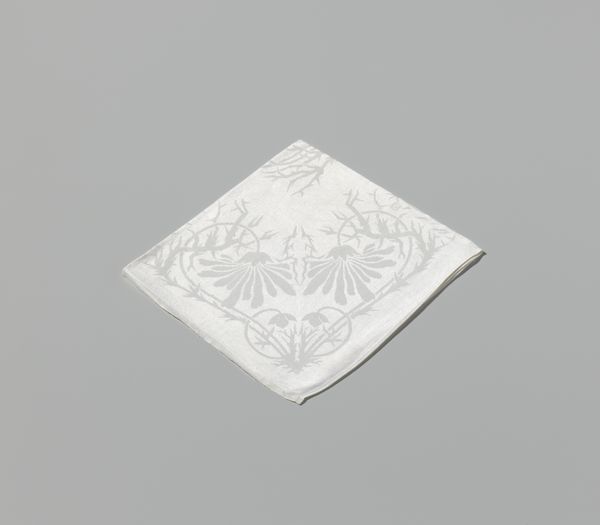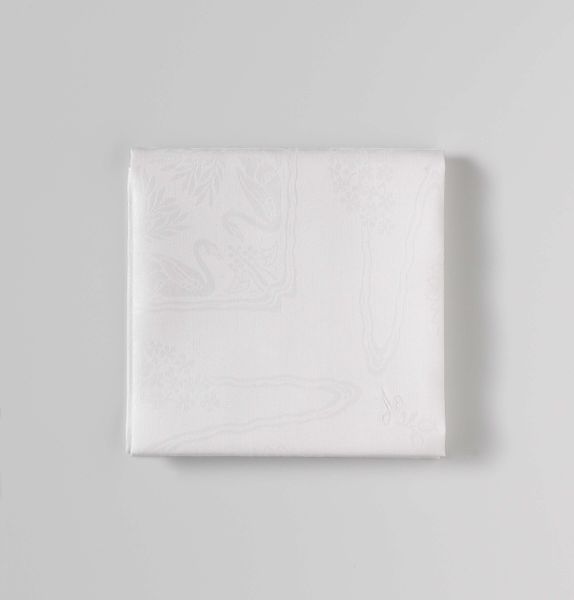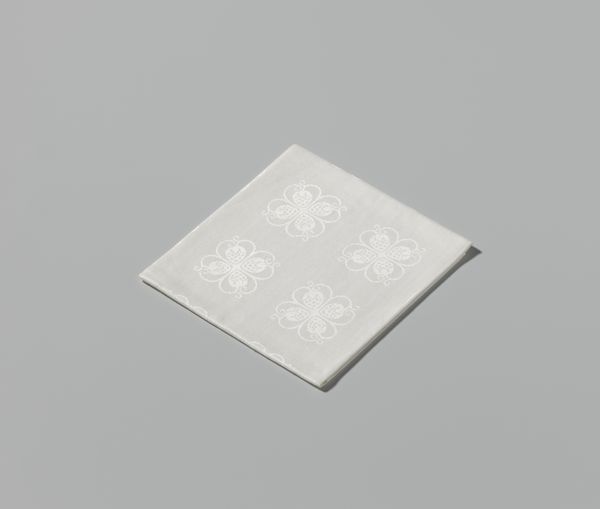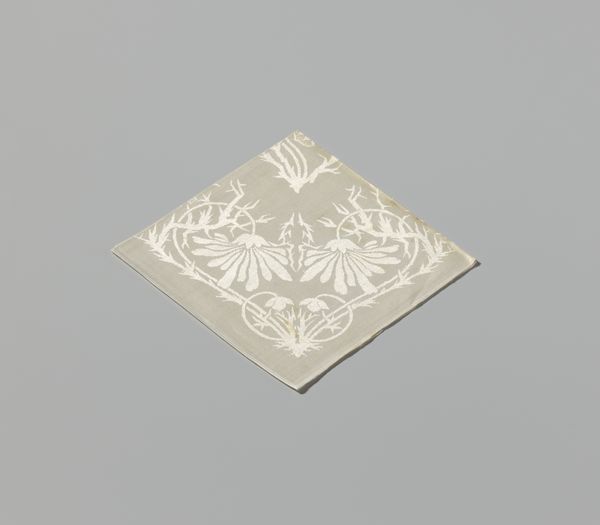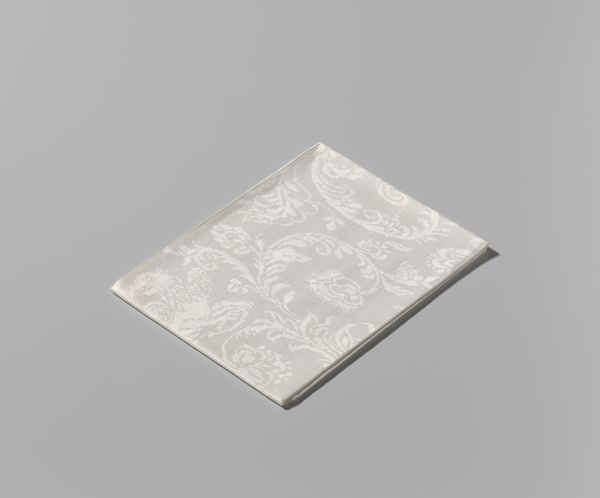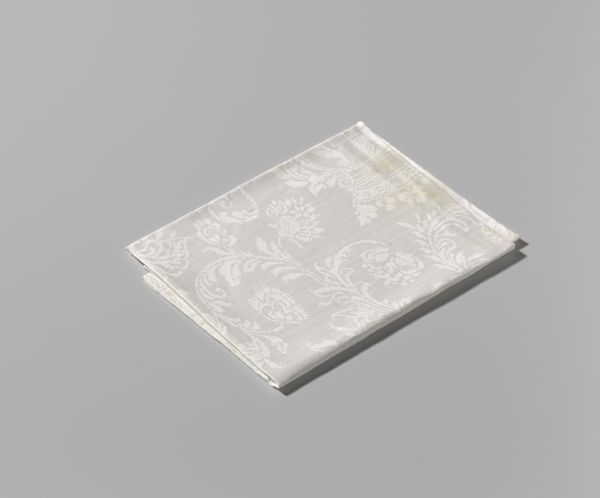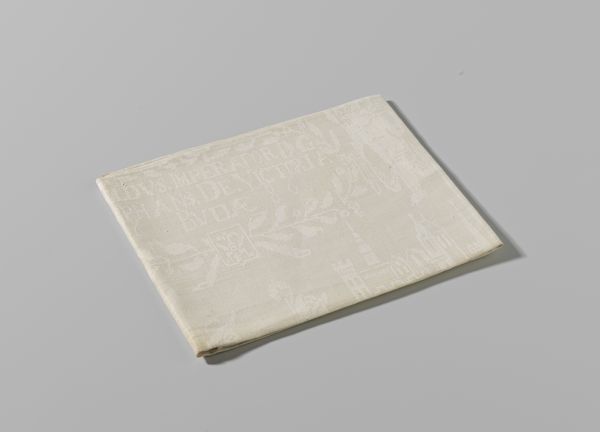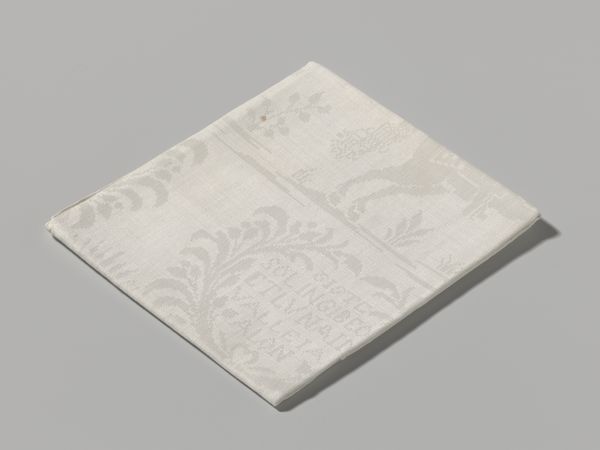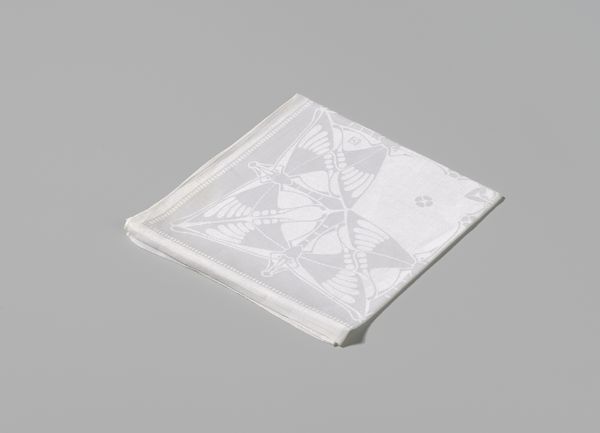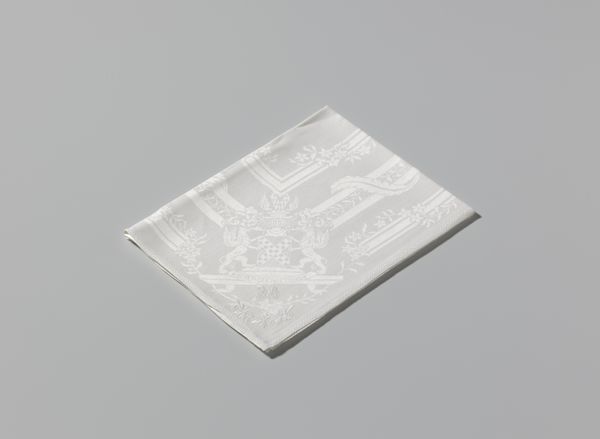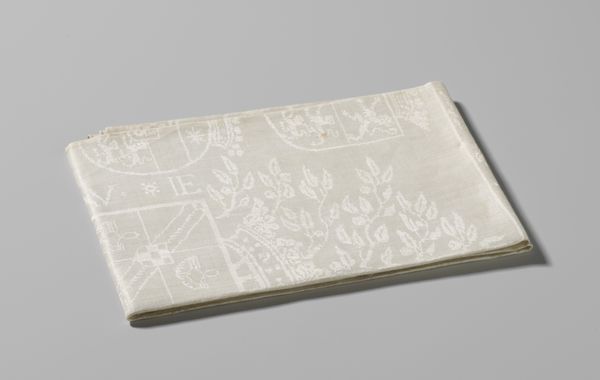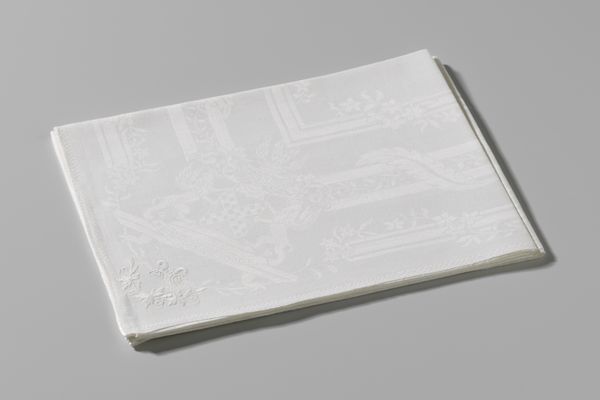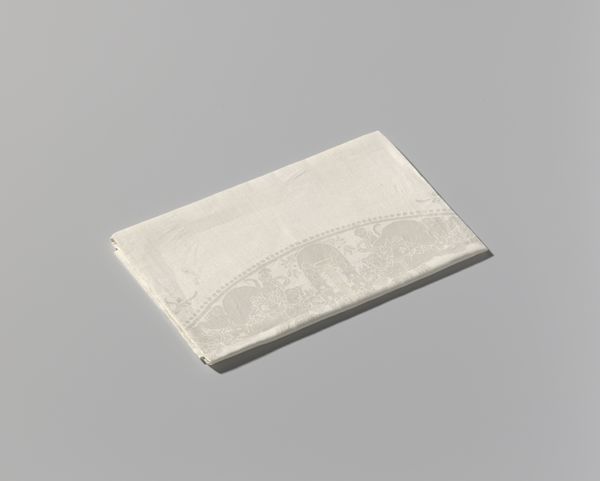
weaving, textile
#
art-nouveau
#
weaving
#
textile
#
decorative-art
Dimensions: height 40 cm, width 38 cm
Copyright: Rijks Museum: Open Domain
Curator: Well, this is an interesting one. What do you make of its compositional elements? Editor: Austere. Perhaps even a bit clinical in its crispness? I’m struck by how the subtle, near-monochromatic variations create depth despite the limited palette. The texture suggests a restrained opulence. Curator: You've zeroed in on some critical points! What we're observing is a damask finger cloth, "Vingerdoek van damast met dessin Fuchsia" is its Dutch name, and it was produced sometime between 1900 and 1935. Woven using the damask technique, of course. Editor: And damask implying the intricate weaving adds structure beyond pure decoration. But that botanical motif—quite stylized, yes? The curves and almost geometric interpretation give it an Art Nouveau flair. Curator: Precisely. This cloth shows the rising vogue of Art Nouveau at the time. With artists like Cornelis van der Sluys, whose profile aligns perfectly with works advocating for accessible art infused into everyday objects. Editor: There's a functional beauty here, it’s a utilitarian object raised almost to fine art. Tell me more, does the fuchsia carry symbolic weight? Curator: Definitely! Beyond merely aesthetics, there's a growing interest at the time in linking design with societal improvements and personal upliftment. These textiles served as domestic markers of cultural refinement. A progressive view, indeed. Editor: And look at the almost minimalist handling of light and shadow, purely from the weaving’s raised sections, creates dynamism on a still object. It also mirrors some philosophical concerns within Art Nouveau where natural is not directly replicated. Curator: A critical reflection of nature rather than replication – I agree. How society processes or perceives botanical form is the crux of Art Nouveau's visual project. Editor: What strikes me, overall, is that, though commonplace in its intended use, its understated elegance quietly disrupted traditional hierarchical categorizations. Curator: Well observed. Ultimately this damask finger cloth gives a clear picture of that time when domestic goods transformed into a narrative of shifting societal priorities and a growing demand for beauty.
Comments
No comments
Be the first to comment and join the conversation on the ultimate creative platform.
